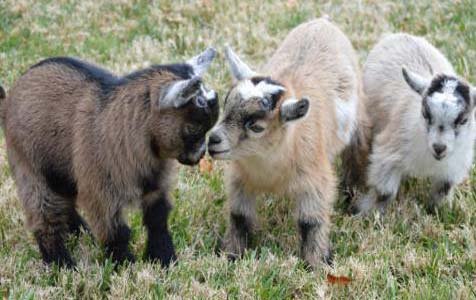DAIRY AND MEAT GOATS
Dairy Goats
However, just like cats and dogs, there are different breeds of goats.Each breed has different meat and milk production rate, if you want to get the most out of your goat, you need to raise the right breed in the first place.

Saanen Goat
Available are Bucks,Bucklings,Does,Doeling,Milking Does and Pregnant Does.

Alpine Goat
Available are Bucks,Bucklings,Does,Doeling,Milking Does and Pregnant Does.

Toggenburg Goat
Available are Bucks,Bucklings,Does,Doeling,Milking Does and Pregnant Does.

Obershali Goat
Available are Bucks,Bucklings,Does,Doeling,Milking Does and Pregnant Does.

Nubian Goats
Available are Bucks,Bucklings,Does,Doeling,Milking Does and Pregnant Does.

Lamancha Goat
Available are Bucks,Bucklings,Does,Doeling,Milking Does and Pregnant Does.
Miniature Goats

Pygmy Goat
Pygmy Goats are a dual-purpose (milk and meat) goat, ideally sized for smaller farms. Pygmy Goat milk is very rich, perfect for home cheese making. Pygmies are heavily muscled, and perfectly sized for the family freezer.

Kiko Goat
Kiko goats are bred for meat originating in New Zealand. They are prized for hardiness and profitability as meat animals. While the breed was originally created and solidified in New Zealand, these goats are currently found in many locations, particularly the United States. Its ability to survive and thrive in harsh conditions make many people consider these goats a highly profitable breed to own.
Meat Goats

Boar Goat
The Boer breed is characterized by a red head and red on at least a portion of the neck, with a white body. They have large pendulous ears. Some breeders have chosen to breed and promote solid color Boers, but there is little scientific evidence that they have any unique merit in productivity. Several Boer breed associations exist in the United States and each uses a set of standards related to appearance and function.

Spanish Goat
This breed is actually a type of goat that, on the whole, has been subject to some selection pressure for various production traits such as prolificacy and weight for age. The name is used loosely at times to refer to local or brush goats, but strictly speaking this is a misnomer. The standards include characteristics that are acceptable, discriminated against and disallowed.

Kiko Goat
Kiko goats are bred for meat originating in USA and the World at Large.hey are prized for hardiness and profitability as meat animals. While the breed was originally created and solidified in New Zealand, these goats are currently found in many locations, particularly the United States. Its ability to survive and thrive in harsh conditions make many people consider these goats a highly profitable breed to own.


